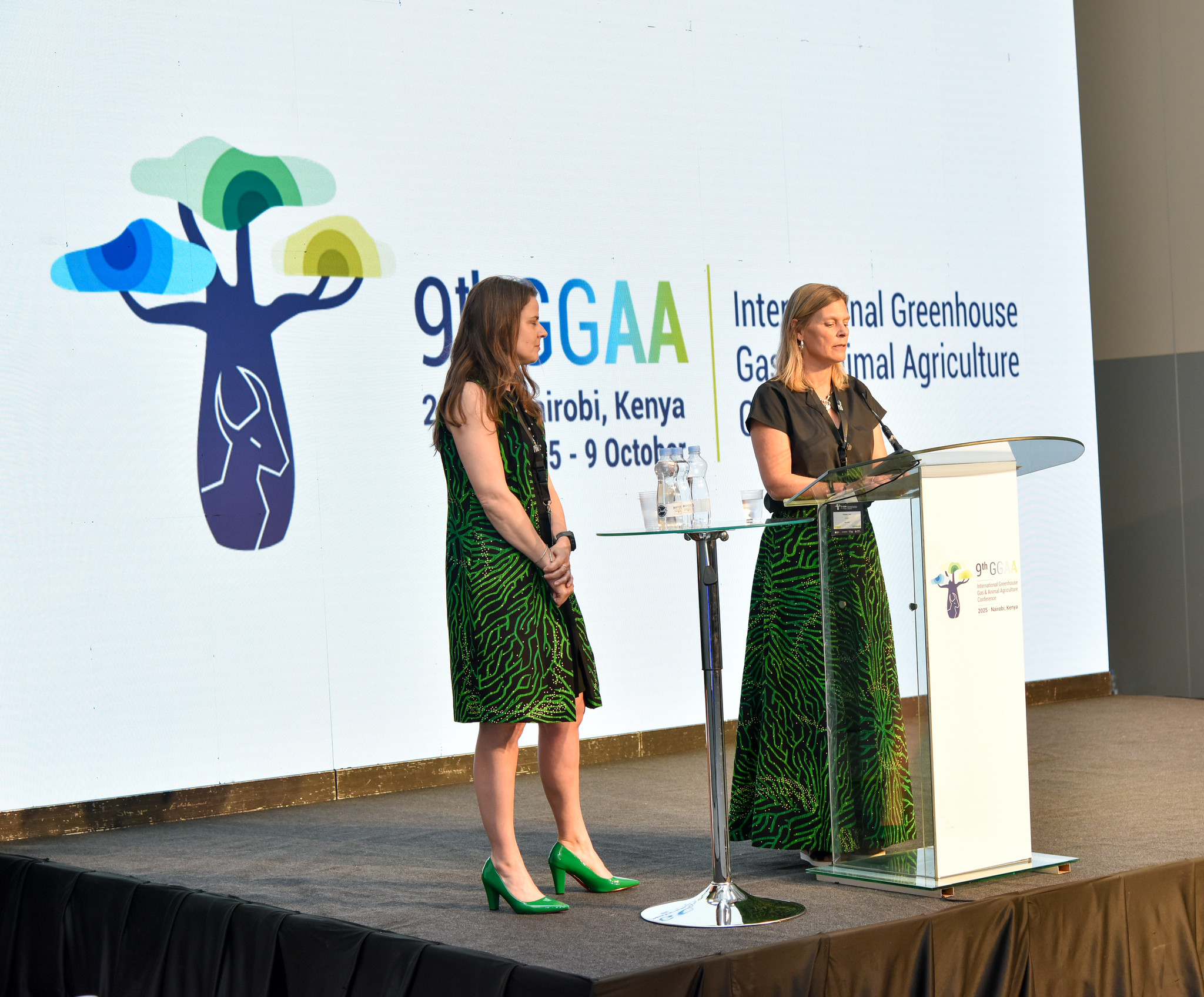The International Greenhouse Gas & Animal Agriculture Conference (GGAA) is making its debut on the African continent.
The 9th edition, co-hosted by the International Livestock Research Institute (ILRI) and the Norwegian Institute of Bioeconomy Research (NIBIO), is taking place in Nairobi, Kenya.
The conference aims to shift global climate dialogue toward inclusive, representative discussions on reducing livestock emissions while strengthening food security and rural economies.
GGAA2025 brings together more than 500 leading scientists, policymakers, industry experts, and civil society representatives to tackle one of agriculture’s most urgent challenges: lowering greenhouse gas emissions from livestock without compromising food security or rural livelihoods.

Delegates at the opening ceremony of the 9th Greenhouse Gas & Animal Agricultural Conference in Nairobi, Kenya.
The event emphasizes that solutions must be practical and context-specific, particularly in developing regions where livestock systems differ markedly from those in high-income markets.
Claudia Arndt, Senior Scientist at ILRI and Team Leader of the Mazingira Centre, highlighted the significance: “Bringing GGAA to Nairobi is a deliberate and significant move. Low- and middle-income developing country livestock systems have been under-represented in global climate science. GGAA 2025 changes that. We are showcasing research from low- and middle-income countries, particularly Africa where we have 17 countries represented. This is where we can forge a sustainable future for the global livestock sector, one that is built on context-specific solutions.”
The Nairobi venue underscores Africa’s central role in shaping a sustainable path forward for the sector. With one-third of the world’s livestock and species contributing significantly to local economies, the continent’s potential for emission reduction is substantial.
In some countries, livestock accounts for a sizable share of GDP and a meaningful portion of national emissions, underscoring the urgency of context-aware strategies.

Left to right: Claudia Ardnt, Senior Scientist at the International Livestock Research Institute, ILRI, and Team Leader of the Mazingira Centre and Vibeke Lind, a Research Scientist at Norwegian Institute of Bioeconomy Research, NIBIO, address delegates during the opening ceremony of the 9th Greenhouse Gas & Animal Agricultural Conference in Nairobi, Kenya.
GGAA2025 aligns with a core principle: “one size does not fit all.” While high-productivity systems in Europe or North America may benefit from certain technologies, such as high-output dairy genetics, these approaches are often not feasible for Africa’s smallholder farmers, who typically produce far less milk per cow.
For these producers, the most impactful emission reductions are achieved by improving animal health, feed quality, and genetics to raise productivity and lower emissions intensity.
The conference will feature research and scalable technologies that demonstrate climate-smart livestock is already within reach. Highlights include:
- Breeding low-methane livestock through genomic selection tools
- Real-time methane monitoring via ‘Exhalomics’ cow breath analysis
- Circular manure systems that reduce emissions up to 90% while generating renewable energy and organic fertilizer
- Animal health interventions and modeling showing disease reduction could cut emissions intensity by up to 12%
- Forage innovations that boost productivity and lower methane output
- Digital farm tools and carbon accounting systems for tracking and managing emissions
Academic and policy sessions will explore topics such as rumen microbial genomics, manure management, greenhouse gas measurement techniques, and policy frameworks for integrating livestock into national climate commitments.
Professor Appolinaire Djikeng, Director General of ILRI, emphasized the event’s broader purpose.
“We want GGAA 2025 to be a springboard for lasting partnerships that ensure solutions are farmer-ready, affordable, and equitable and support resilient livelihoods. We don’t have to choose between food security and climate mitigation—the path forward is to improve livestock productivity. Farmer-ready solutions are proving it’s possible to do both. The goal is to cut emissions while raising yields—that’s the win-win of climate-smart livestock.”

